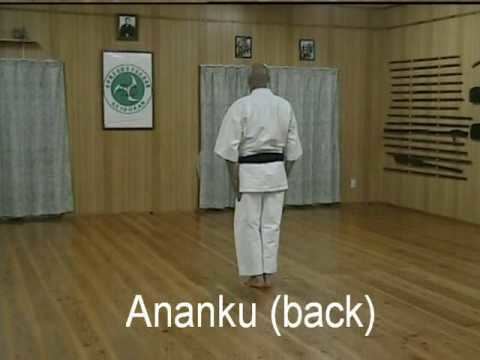 | ||
Anaku se al
Anaku (アナク) is a kata derived from Ananku (See Karate kata). It is translated as Expression Pivoting Form, Pivoting Swallow Form, or more the archaic, Swallow Pivoting on a Beach Overlooking the Sunset in the Middle of the Afternoon Form. This kata is typically taught to Go Kyu (Green Belt Kata).
Contents
Anaku is used to teach two principles: shifting from Kiba Dachi to Zenkutsu Dachi to Kiba Dachi, and T'ung Gee Hsing's principle of pounding, which is hitting the same spot multiple times.
Chotoku Kyan is credited with recomposing this kata for Karate in 1895.
anaku kata ryukoku seidokan karate
Bunkai
References
Anaku Wikipedia(Text) CC BY-SA
